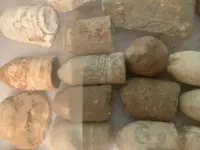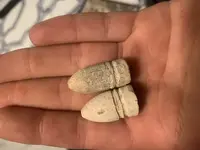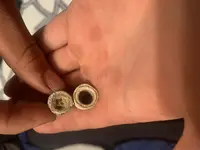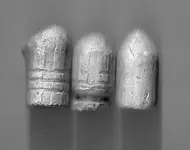DiggerKid2003
Sr. Member
- Joined
- Jul 5, 2014
- Messages
- 469
- Reaction score
- 1,103
- Golden Thread
- 0
- Location
- Spotsylvania VA
- Detector(s) used
- Garret At Pro, Garret Pro Pointer, Wireless Z-Lynk headphones.
- Primary Interest:
- Metal Detecting
My buddy found this bullet in a battle spot where he found hundreds of other bullets. You guys know how it is with civil war bullets, some can get really expensive and can be hard to identify, which is why I’m posting this here. I don’t have the exact measurements as I only had a few minutes to snap some pictures, but it should give you a decent gauge on it. It’s longer and thinner than a Gardner, but has two rings like a Gardner. Thanks for the help, -DK



Here’s the base next to a Gardner, doesn’t help too much but you can tell it’s just a thinner bullet



Here’s the base next to a Gardner, doesn’t help too much but you can tell it’s just a thinner bullet




